#rupununi
Explore tagged Tumblr posts
Text
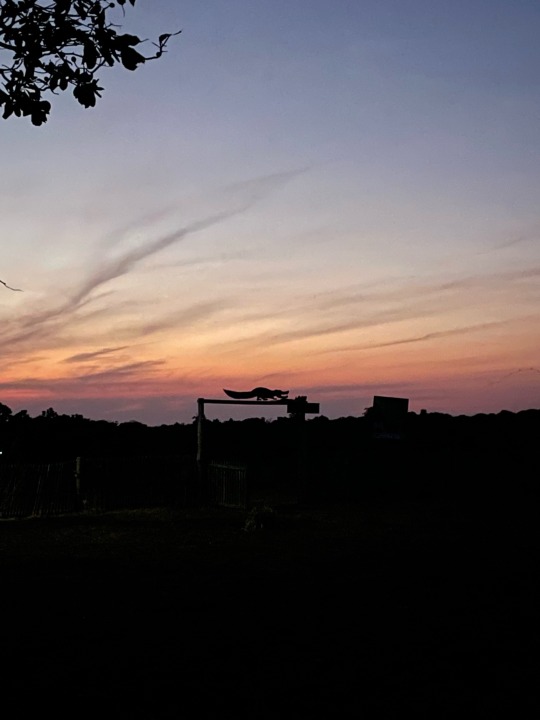
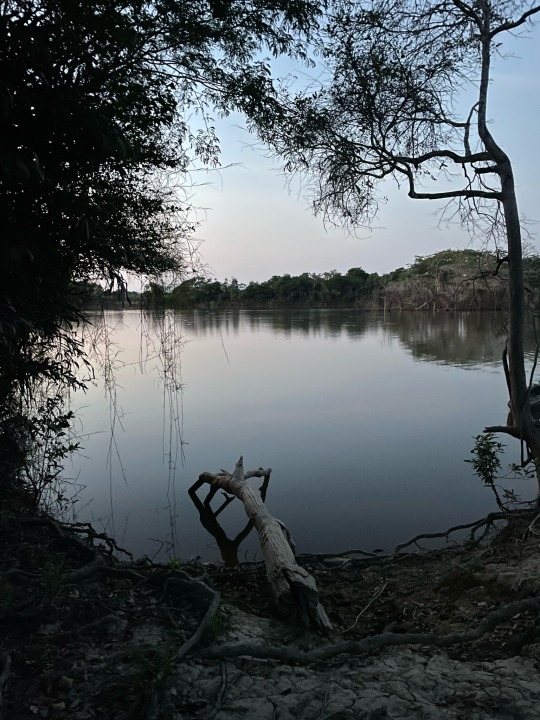
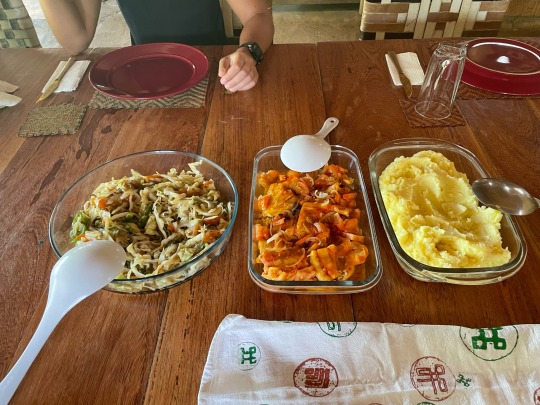
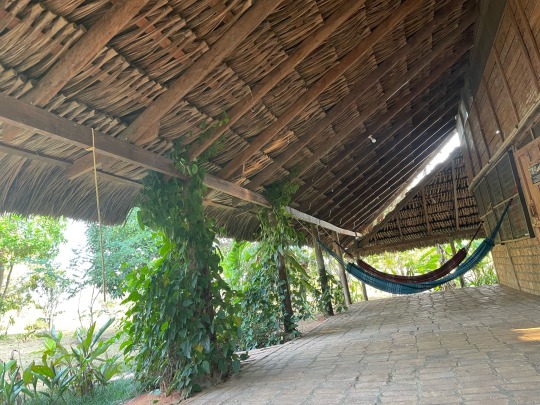
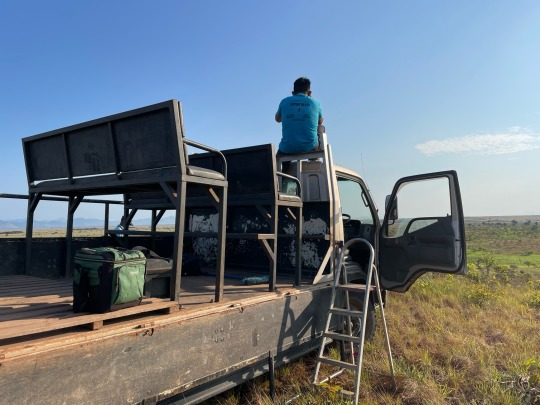
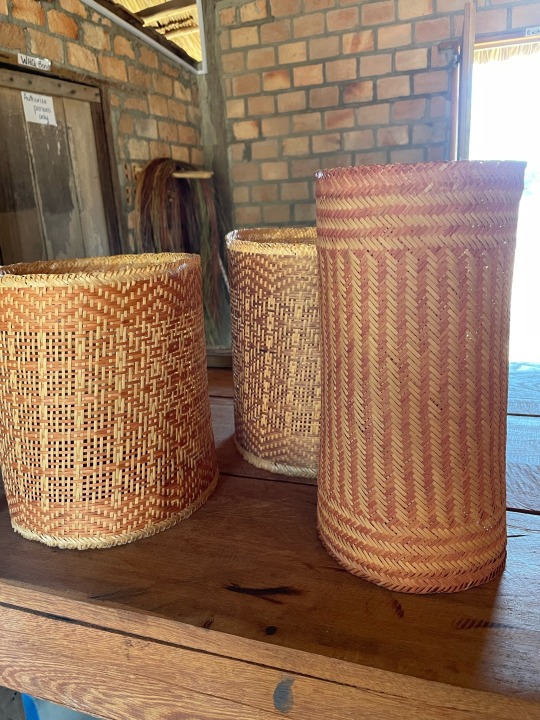

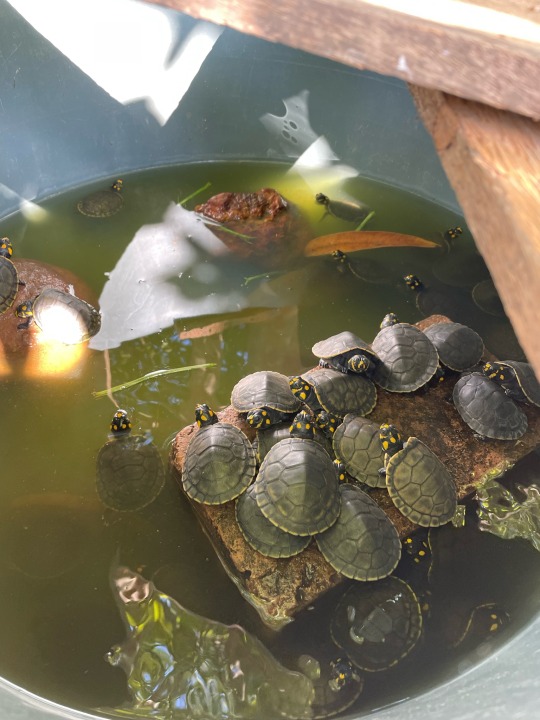
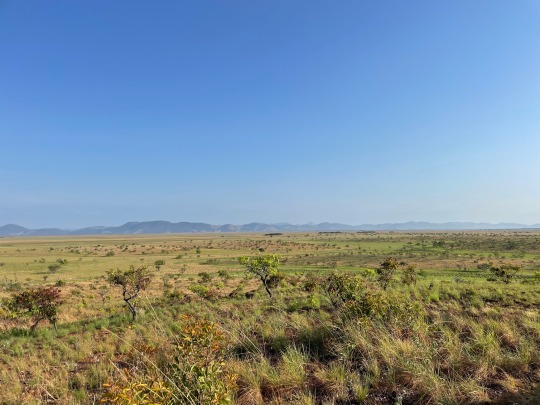
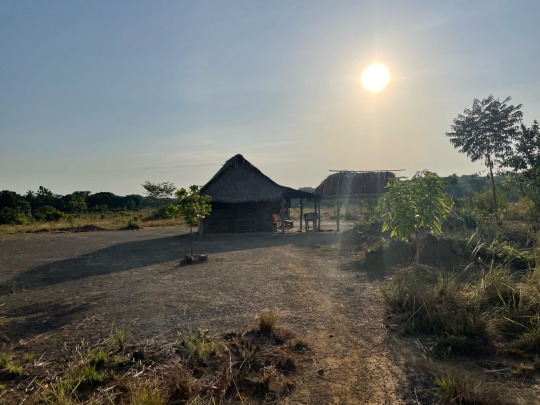
Caiman House in Yupukari Village, North Rupununi Guyana.
I think I may have found paradise on Earth.
I visited during the dry season, but in the wet, everything the light touches is flooded by one of two neighbouring river systems.
The Mapuke people were so welcoming and full of knowledge about their breathtaking environment. Caiman House EcoLodge was beautiful and super comfortable and activities were balanced by plenty of rest during the hottest part of the day and plentiful fresh food, tailored to guests’ preferences.
We went on a caiman capture trip to support research into black caiman populations, visited the village’s turtle conservation project, saw the blue backed manakin on a birdwatching walk, saw giant anteaters and giant otters and the Agame heron, and hundreds of other creatures I’ll never remember the names of.
If you’re looking for somewhere to go as a South American alternative to the African Safari, I cannot recommend the Rupununi region enough. And I’ll put in a special word for Caiman House - it’s run by and for the community and delivering training and opportunities to a community of around a thousand people. The guides are working to develop more remote and immersive opportunities and the money from the lodge is supporting programs to develop local artists and crafters into independent sellers, and supporting women to establish commercially successful cassava processing in nearby villages. The staff all rotate through from other roles in the village to share skills around and I did not meet a single person who wasn’t unbelievable generous, knowledgeable, and absolutely thrilled to share their home with tourists.
#brynn travels to latin america#first time backpacker#guyana#rupununi#region 9#Yupukari#black caiman#cassava
5 notes
·
View notes
Text

Red-and-Green Macaw (Ara chloropterus), family Psittacidae, order Psittaciformes, Rupununi River region, Guyana
photograph by @bucktuh
529 notes
·
View notes
Text
Good News - August 1-7
Like these weekly compilations? Tip me at $kaybarr1735 or check out my new(ly repurposed) Patreon!
1. Zoo hails birth of 'one of world's rarest animals'

“[Jasper] the Persian onager was born to mum Azita after a year-long pregnancy. […] Conservationists at the zoo said there are less than 600 surviving wild onagers[, … which] only survive in two small, protected areas in Iran, a Chester Zoo spokesman said. […] Mike Jordan, animal and plant director at Chester Zoo, […] said Jasper is "doing very well" and added that "mum Azita is doing a fantastic job of nurturing and bonding with her new charge". "He’s full of energy and enjoys playfully kicking up sand as he races around his habitat", Mr Jordan added.”
2. Charity creates 50 community orchards in city

“Community orchards are returning to Birmingham, with the aim of teaching people how to grow their own food and be part of the solution to climate change. […] Once established, the long-term aim is to distribute the produce to those most in need, but local people are also invited to pick the odd bit of fruit. […] By planting trees and plants and encouraging biodiversity back to these areas the charity is also doing its bit to help climate change. They even use locally sourced wood chip which helps to put carbon back into the soil. […T]he hope is that these edible landscapes can also be enjoyed by local people for years to come.”
3. Farmer-led badger vaccination could revolutionize mission to tackle bovine TB

“[… T]he results of a four-year pilot badger vaccination program co-managed between farmers, scientists, and conservationists […] show the percentage of badgers testing positive for bovine tuberculosis (bTB) in the study area dropped from 16% to 0%[….] While most bTB incidents in cattle are caused by transmission between herds, transmission from wild badgers plays a role in the persistence of the disease. […] Blood sampling showed that the proportion of badgers with bTB fell even though overall badger numbers remained high[….]”
4. Every Colorado Anti-Trans Ballot Initiative Fails To Collect Enough Signatures

“Anti-transgender politics are becoming increasingly unpopular in polls. […] A recent LA Times/NORC poll found that 77% of voters believe elected officials use transgender debates to divert attention from more pressing issues. The poll also showed significant opposition to forced outing policies. […] A Gallup poll published in June revealed that while Americans have mixed views on the morality of transitioning, the majority oppose bans on gender-affirming care for trans youth. […] “The fact that they could not get enough signatures, barely half, to be placed on the ballot shows they lack support from everyday voters.”
5. In a fight to save a rare bird, Indigenous communities in Guyana are winning

“The partnership [between Indigenous communities and Smithsonian researchers] sparked a decades-long community-led conservation movement that has protected the red siskin and helped locals reconnect with nature. [… T]he South Rupununi Conservation Society […] established one of the country’s first conservation zones to protect the species, covering 75,000 hectares (185,000 acres) of Indigenous land. […] To plant the seeds of conservation, they’ve implemented an after-school program in more than 16 communities, [introducing children] to ecological research and surveying, and also [teaching] about Indigenous culture and tradition, including fire management skills.”
6. North Adams hospital gets federal designation which pays for health care in rural areas

“[The hospital] received a federal designation on Wednesday that is key to its long-term financial stability. […] The designation pays for staffing regardless of the number of patients[… and] “works to resolve stark inequities in rural and underserved communities as it relates to our nation’s health system."”
7. Andrea Vidaurre: Leading the clean transportation revolution
“Thanks to Vidaurre’s relentless advocacy and strong community support, these regulations introduced the first national standards for train emissions and set a groundbreaking goal for all freight trucks to be zero-emission by 2036. This initiative promises cleaner air for Californians and paves the way for a zero-emission vehicle future across the country. Studies predict these measures will prevent thousands of respiratory illnesses and save countless lives in the coming decades.”
8. Boston announces a new climate resilience office

“Through its Climate Ready Boston initiative, the city has worked to […] design creative adaptation plans with community input[, …] includ[ing] everything from redesigning waterfront parks and planting more trees, to modernizing the city’s underground sewer system[….] The Office of Climate Resilience will be in charge of coordinating work across city departments and with community groups[….]”
9. Combining Green Thumbs and Sustainable Fashion in a Swap Event

“This unique plant and clothing swap event in NSW is championing both environmental and fashion sustainability through native plants and preloved clothing. […] To participate in the plant swap, attendees brought their environmental weeds in a bag to the Council stall and exchanged them for free native plants. […] The event sparked valuable community conversations about the benefits of plant and clothes swaps, the impact of textile waste[, …] support a circular economy and combine a love for nature with practical, eco-friendly practices.”
10. Growing Green Spaces to Protect the Endangered Regent Parrot

“On Schools Tree Day, celebrated on 26 July, students from a local NSW school planted trees and shrubs to create crucial forage habitat for the endangered Regent Parrot, enhancing local biodiversity. […] Approximately 50 [… plants of] native species were chosen for their ecological benefits, helping to attract native birds, bees and butterflies while providing essential habitat and food. […] They [also] raise awareness about the regent parrot, encourage conservation efforts and emphasise the importance of protecting local wildlife. Additionally, conserving [the regent parrot] supports the health of their ecosystem by helping with in [sic] seed dispersal and maintaining plant diversity.”
July 22-28 news here | (all credit for images and written material can be found at the source linked; I don’t claim credit for anything but curating.)
#hopepunk#good news#zoo#donkey#orchard#community#food insecurity#community garden#badger#vaccine#cow#tuberculosis#colorado#trans#transphobia#transgender#law#politics#birds#indigenous#conservation#hospital#health#healthcare#california#trains#truck#zero emissions#climate change#boston
56 notes
·
View notes
Text
10 hechos increíbles sobre Guyana


2. Es conocida por su diversa composición étnica, con una mezcla de poblaciones indoguyaneses, afroguyaneses e indígenas.

4. El país cuenta con una increíble variedad de vida silvestre, incluyendo jaguares, nutrias gigantes de río y el raro oso hormiguero gigante.

6. Tiene la distinción de ser el único país de América del Sur que no es una nación hispana.
7. La ciudad capital de Guyana es Georgetown, conocida por su hermosa arquitectura colonial.
8. Guyana es famosa por sus vastos tramos de selvas prístinas, que son el hogar de una amplia variedad de especies vegetales y animales.
9. El país es un importante productor de bauxita, oro y diamantes, contribuyendo a su economía.
10. Guyana también es el hogar de la Rupununi Savannah, una vasta pradera que es el hogar de diversas fauna silvestre y comunidades indígenas.
2 notes
·
View notes
Text
Columna de Juan Martorano Edición 280: Planes militares por parte de Venezuela para recuperar la Guayana Esequiba. Cuarta y penúltima parte
*JUAN MARTORANO El arrinconamiento a los ganaderos del Rupununi. Guzmán Mirabal en el trabajo in comento hace mención de que en fecha 23 de septiembre de 1968, directivos de la Asociación de Productores del Rupununi, dirigieron una comunicación al Gobierno de Venezuela, en la que manifestaron: “Nosotros, los residentes del Distrito Rupununi de Guyana […] estamos deseosos de…

View On WordPress
0 notes
Text
Storm rips 17 houses in Rupununi; emergency response mission deployed
One of the houses at Karasabai that was destroyed by the storm. At least 17 houses at Karasabai, Rupununi were Sunday night damaged or destroyed by a violent storm, the Civil Defence Commission (CDC) said Monday. “A powerful wind storm hit several houses in Karasabai, Region 9 last evening leaving significant damage in its wake,” the CDC said. The Commission, which is Guyana’s national…
0 notes
Text
Spotlight on Rupununi Savannah: The Ultimate Guyanese Adventure
🌍 Dive into the heart of Guyana! The Rupununi Savannah offers a unique landscape, breathtaking wildlife, and a rich indigenous culture. Discover why it’s the ultimate destination for adventurers and nature lovers. 🌿🌅 📖 Read more in our latest blog post!

https://www.travelguyana.co/2024/10/26/spotlight-on-rupununi-savannah-the-ultimate-guyanese-adventure/
0 notes
Photo
Berbice River
River in Guyana

The Berbice River, located in eastern Guyana, is one of the country's major rivers. It rises in the highlands of the Rupununi region and flows northward for 595 kilometres through dense forests to the coastal plain. The river's tidal limit is between 160 and 320 km from the sea.
Source: Rupununi River
Length: 595 km
Mouth: Atlantic Ocean
Country: Guyana
Berbice River - Wikipedia

Truck loaded with plantains in Berbice, Guyana
374 notes
·
View notes
Text
Complete list of Miss Universe Guyana 2023 candidates
There are eight women competing for the Miss Universe Guyana 2023 crown. Here are the candidates: Colline Ward (Bartica) Mackella Profeiro (Demerara-Mahaica) Chandini Baljor (Essequibo Islands-West Demerara) Lieve Blanckaert (Georgetown) Melissa McLean (La Parfaite Harmonie) Britny Mack (Pakaraima) Lisa Narine (Pomeroon-Supenaam) Anika Felicien (Rupununi)

View On WordPress
1 note
·
View note
Note
No rush on this, but i love your blog and the sweet terms you use to address askers! Humbly requesting a few crocodilians for my Lyle, Lyle Crocodile-loving heart 💜
Aw, thank you my little lemondrop. Today, I have some of my favorite crocodilians for you... the caimans!

Yacare Caiman aka Southern Spectacled Caiman (Caiman yacare), family Alligatoridae, Brazil
photograph by thejack

Black Caiman (Melanosuchus niger), family Alligatoridae, Rupununi River, SW Guyana
photograph by David Stanley

Broad-snouted Caiman (Caiman latirostris), mother carrying baby from nest to nearby water, family Alligatoridae, Santa Fe, Argentina
photograph by Mark Macewen


Broad-snouted Caimans (Caiman latirostris), family Alligatoridae, found in eastern and central South America
photographs by Dennis Jarvis and Tim Sagorski

Spectacled Caiman (Caiman crocodilus), family Alligatoridae, Brazil
photograph by MikeLane45

Cuvier's Dwarf Caiman (Paleosuchus palpebrosus), family Alligatoridae, found in much of northern and central South America
photograph by Wrangel
#caiman#crocodilian#paleosuchus#melanosuchus#alligatoridae#reptile#herpetology#south america#animals#nature
281 notes
·
View notes
Video
Guyana is home to some of the most biodiverse and beautiful rainforests on the planet

Tourist Attractions You Can’t Miss in Guyana

Kaieteur Falls is one of the world’s most spectacular waterfalls.

Sunset from the waters of the Essequibo River

The flowers of the giant waterlily transform as the evening draws in Guyana

Iwokrama Canopy Walkway: The canopy walkway is a perfect place to spot wildlife you might miss at ground level

Views for miles across the jungle from the top of Awarmie.

Catch a glimpse of big cats in the wild

Hunt down the Goliath Birdeater, the world’s largest spider species

Help out with one-of-its kind black caiman research-Support local conservation efforts and touch a living caiman while helping researchers in the Rupununi.

Head out on a speedboat with Caiman House staff to join in their scientific research into the black caiman.

Paddle out in a dugout canoe or kayak -Are you brave enough to bring your camera on a traditional dug-out canoe?

Follow a local cowboy to find giant anteaters-The giant anteater is absurdly well-adapted to live off a diet of termites and ants.

Working cowboys can help you find the giant anteater in the grasslands.

Learn about otter conservation at Karanambu Lodge-What could be better than hanging out with orphaned baby otters for a day?

Giant river otters are just one of Guyana’s extraordinary giant species.

Go horseback riding through the savannahs of the Rupununi-Horseback riding at sunset in the Rupununi is quite the experience

Fish for the world’s largest freshwater fish -Catch-and-release fishing helps support local fish conservation efforts.

Spy the Guianan cock-of-the-rock’s mating dance- male Guianan cock-of-the-rock with its startling plumage.

Find harpy eagles nesting -Harpy eagles need vast trees capable of supporting their massive nests.

Spend a day in Georgetown, Guyana’s scruffy but charming capital -Charming architecture is part of Georgetown’s appeal.

Stay in a historic lodge frequented by presidents and royalty-Gather around the table for a taste of local cuisine.

Tour Guyana’s final remaining sugar cane plantation-Explore the country’s history and rum traditions at one of the last sugar plantations.

Take a sundowner on Guyana’s only highway -Enjoy a drink along the open road and keep your eyes peeled for wildlife.

Stay at one of the country’s indigenous lodges -Supporting sustainable tourism can be as easy as where you choose to stay.

The ATTA Rainforest Lodge in the Iwokrama Reserve is operated by local Guyanese people

Tour Bourda Market and enjoy a Guyanese feast at Backyard Café-Chef Delven Adams loves to explore the cultural flavors of Guyana.

Sample rum blended with local flavours in Georgetown’s colourful markets.
21 Dazzling Tourist Attractions That Will Make You Fall In Love With Guyana (worldlyadventurer.com)
youtube
Join us on the IOTI Expedition 2019. Experience the natural beauty in Guyana, South America including the rainforest, 4x4 Mountain Safari in the Pakaraima mountains, Iwokrama Canopy Walkway, Kaieteur Falls (the highest single drop waterfall in the world), guided tour of Georgetown.
Become a member of the IOTI and get 20% discount off all IOTI Events and IOTI Expedion.
Find more information at https://www.ioti.institute/ioti-expedition
129 notes
·
View notes
Text
Guyana's Rupununi Rodeo celebrates local cowboy culture
Comment on this storyComment LETHEM, Guyana — Their horses’ hooves kick up dust amid blaring country music as participants enter the arena to begin the Rupununi Ranchers Rodeo, a celebration of the cowboy lifestyle on Guyana’s rugged Rupununi savannah. The two-day, annual rodeo draws thousands of visitors from Guyana’s capital and other countries, especially neighboring Brazil. The event is…

View On WordPress
0 notes
Text

If sustainably managed, wildlife can: - provide nutrition & income - contribute to poverty alleviation - safeguard human & environmental health
0 notes
Text
Columna de Juan Martorano Edición 278 Planes militares por parte de Venezuela para recuperar la Guayana Esequiba (II)
Juan Martorano Como lo indicamos en entregas precedentes, nos referiremos a un trabajo realizado por Guillermo Guzmán Mirabal titulado: “Del Acuerdo de Ginebra a la Rebelión del Rupununi” que aparece desde la página 40 a la 69 del Boletín de la Academia Nacional de la Historia N° 394 de abril-junio de 2016, donde se detalla sobre estas operaciones y acciones poco conocidas en este…

View On WordPress
0 notes
Text
Improve security in Marudi, suspend mining--South Rupununi District Council after abduction, robbery
The South Rupununi District Council (SRDC) on Monday said the crime situation in Marudi has deteriorated with the influx of Brazilian miners crossing illegally into Guyana through a back-track route that a number of robbers escaped shortly after abducting and robbing several Guyanese and Brazilians. The Council called for tightening of security in the Marudi Mountains area in the wake of the the…
0 notes
Text
Ready to Discover Guyana?

From the majestic Kaieteur Falls to the untouched wilderness of Rupununi Savannah, Guyana is a true gem for adventurers and nature lovers alike! 🌿
Check out our latest blog where we reveal the Top 10 Must-Visit Destinations in Guyana! Whether you’re planning a visit or just dreaming about it, these spots will blow your mind! 😍
👉 Read more: https://www.travelguyana.co/2024/10/17/top-10-must-visit-destinations-in-guyana-2/
0 notes